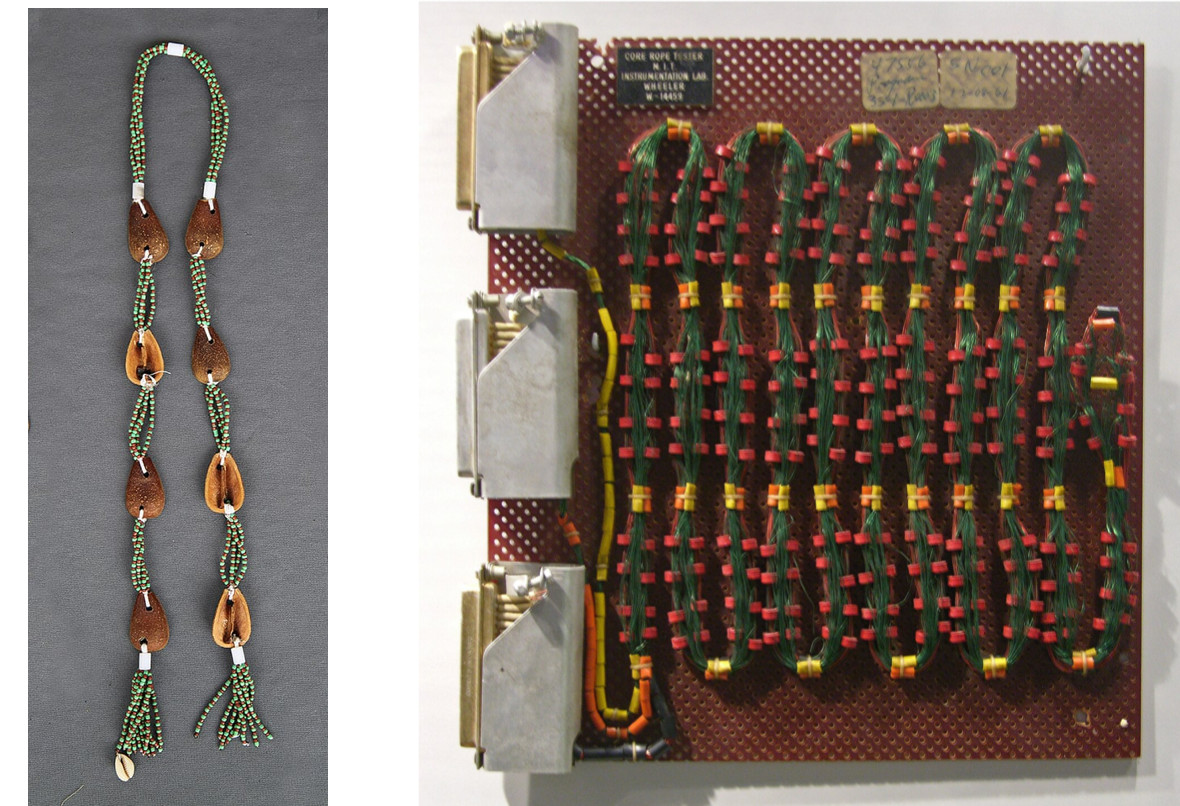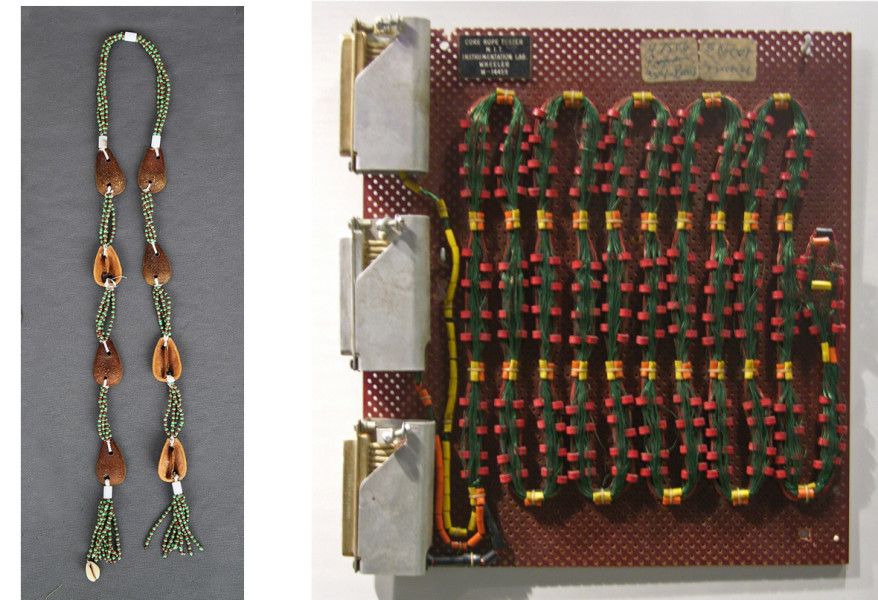We would visit my grandmother anytime we returned home. It had been five years since the last time I had been back to Nigeria. I remember her walls were filled, ceiling to floor, with photos. Photos of my mother, my aunts, my uncles. My grandfather. Other photos were in boxes — stored, archived, tucked away. It was the way she remembered. I watched Grandma leave the living room to enter the kitchen, passing through a doorway curtain strung with shells and beads that danced to the breeze of her movement. Soon she returned, making her way to a set of tall cabinets that were filled, ceiling to floor, with miscellaneous objects. On the back of the top shelf, there was a jar of white cowrie shells sitting behind a book and a cross. Stored, archived, tucked away.
Five years ago was the last time I saw my grandmother. We belong to a nationality within the Nigerian state, the Yoruba, which have an oracle system for divination called Ifá. It materializes through a set of different tools, one of them being a woven chain made of eight similar objects that have two distinctive sides. Originally made of kola nuts, these tools have evolved to make use of other objects like cowrie shells or coconut, primarily due to the transatlantic slave trade and the forced movement of Black people into diaspora. When the chain is tossed by a diviner, a combination of the eight objects facing upwards or downwards results in 256 possible readings of ancestral memories and oracular verses used to decipher past, present and future conundrums of life. This apparatus for divination through collective memory has a binary implementation not unlike the computer byte: a single unit of machine memory that contains eight bits and can store 256 different values (0-255). While computer memory has a finite capacity, the divination chain has boundless potential. It extends itself from a physical mechanism into a field of ritualized practice that has the ability to be recast to unearth an unlimited number of interpretations depending on the context.
If cultural value systems are encoded into the objects that we build, then Western ideals are deeply embedded in the pervasively ubiquitous technologies of today. They function as a reflection of hegemonic and capitalist convictions that are often imbued with anti-Black sentiment. Consider the archive. Computer memory is an extension of the colonial archive, which exercises a dominant social and political influence that disregards the deeply personal and nuanced memories of its subjects. Computer memory, with its limited storage and manufactured scarcity, was designed to be overwritten to make way for new information. This is inextricable from colonial methods of control and power that seek to render everything and everyone as programmable. In doing so, it allows for the histories of those it exercises dominion over to be overwritten in favor of enforcing racial hierarchies and scaling singular White supremacist values towards an increasingly global scale, often under the guise of progress. That is not to say that the West is solely implicated by such oppressive measures. To open a portal against African exceptionalism, one must take into account pre-colonial African histories of kingdoms and their institutional slavery practices. Yorubaland monarchies developed a system of categorization, demarcating “their own” from those deemed “justifiable” targets for enslavement. Institutional ethnic "othering"—enacted by Yoruba leaders—determined which specific Indigenous nations were trafficked into the transatlantic slave trade. This process of categorization and subsequent violent dispersal is directly tied to the systems of racial hierarchy and militarized dominance perpetuated by the West. Yoruba cosmologies are often highlighted in Black diasporic discourse without engaging these complicated histories—a reminder that the effects of empire and its entanglement with colonialism is profound and far-reaching. Practices of divination in my Yoruba culture are not practiced by my family anymore; they have effectively been erased as a result of colonialism through generations in my lineage.
I identify with the women of early computing days, whose contributions, like those of my ancestors, have largely been relegated and untold. During the pioneering of the Apollo spacecraft mission, women workers manually wove memory into computer systems, translating software programmed by MIT engineers into physical binaries. The first woman to do this was Hilda G. Carpenter, a Black lab technician who advanced the methods that would ultimately be used to land Apollo missions on the moon. These threading techniques, referred to as “core rope memory” and “magnetic core memory,” were laborious processes of physically coding information into machines using ferrite rings and copper wire to control the flow of electricity. I am captivated by the conceptual and aesthetic symmetry of two seemingly unrelated objects — core rope memory from early software computing and the divination chain from my Nigerian lineage — and their relationships to memory and erasure. Both objects function as mnemonic devices — that is, serving to remind us of what once was.

In Wendy Hui Kyong Chun’s Programmed Visions: On Software and Memory, Chun meditates on software as an analogy for ideology capable of “reconceptualiz[ing] bodies, society and memory.” Computing’s gendered and military-surveillant history implicates software as a neoliberal agent that transforms relations between objects and subjects. The intentional shift from manual cable switching and hard-coded information to abstracted interfaces and mutable technologies has caused software to become a paradoxical symbol. That which is unseeable still yields visible results. In this double-binded coalescence lies a simplified collapsing of personified processes and their biopolitical circumstances. To explain this, Chun articulates that “Computers have become metaphors for the mind, for culture, for society, for the body, affecting the ways in which we experience and conceive of ‘real’ space”. The ephemerality of memory dictates that ideas are never remembered in the exact same manner twice, however, hardening the bioprocesses of human memory into simplified computer storage dismisses the convoluted dichotomy of things digital versus things analog. To draw a distinction between memory and computer storage, Chun suggests that "memory is not a static but rather an active process. A memory must be held in order to keep it from moving or fading.”
I echo Chun and want to expand upon this by surfacing an alternate way of thinking about memory through time that pulls from ancestors. The “Sasha” and the “Zamani” are ontological aspects of time expressed in East and Central African traditions that describe the relationship between the living, the living dead, and the dead. The former, Sasha, describes a space-time continuum where people, places, ideas and things remain alive in human memory, while the latter, Zamani, describes the limitless dimension into which everything is ultimately subsumed when no longer remembered by the living. Collective memories are never to be overwritten. They are forever fading from the Sasha into the Zamani until they are remembered again by anyone living. In contrast to Western capitalist doctrines of linear temporality that habitually prioritize future-facing progress at the expense of erasing the past, this ideology offers a non-linear perception of time where the past is an infinitely capacious realm that we are approaching rather than moving away from. This intersects with what Chun refers to as “the undead of information:” software’s commitment to a simultaneous invisibility and visibility, unknowability and knowability, degeneration and regeneration, mysticism and rationality. Through this lens of ambiguous conflation, information is neither alive nor dead, but rather, persistently resuscitated, inevitably embodied and “always already there.” This posits death as a moment of radical continuity.
I heal from the embodied affect of displacement by remembering alternate modalities of being. Memory can be used as a form of resistance to heal anti-Black sociopolitical dynamics, and this is amplified when it is practiced through a communal effort. Our bodies are archives and sites of memory that cannot and will not be overwritten, despite technological attempts to render them as such.

